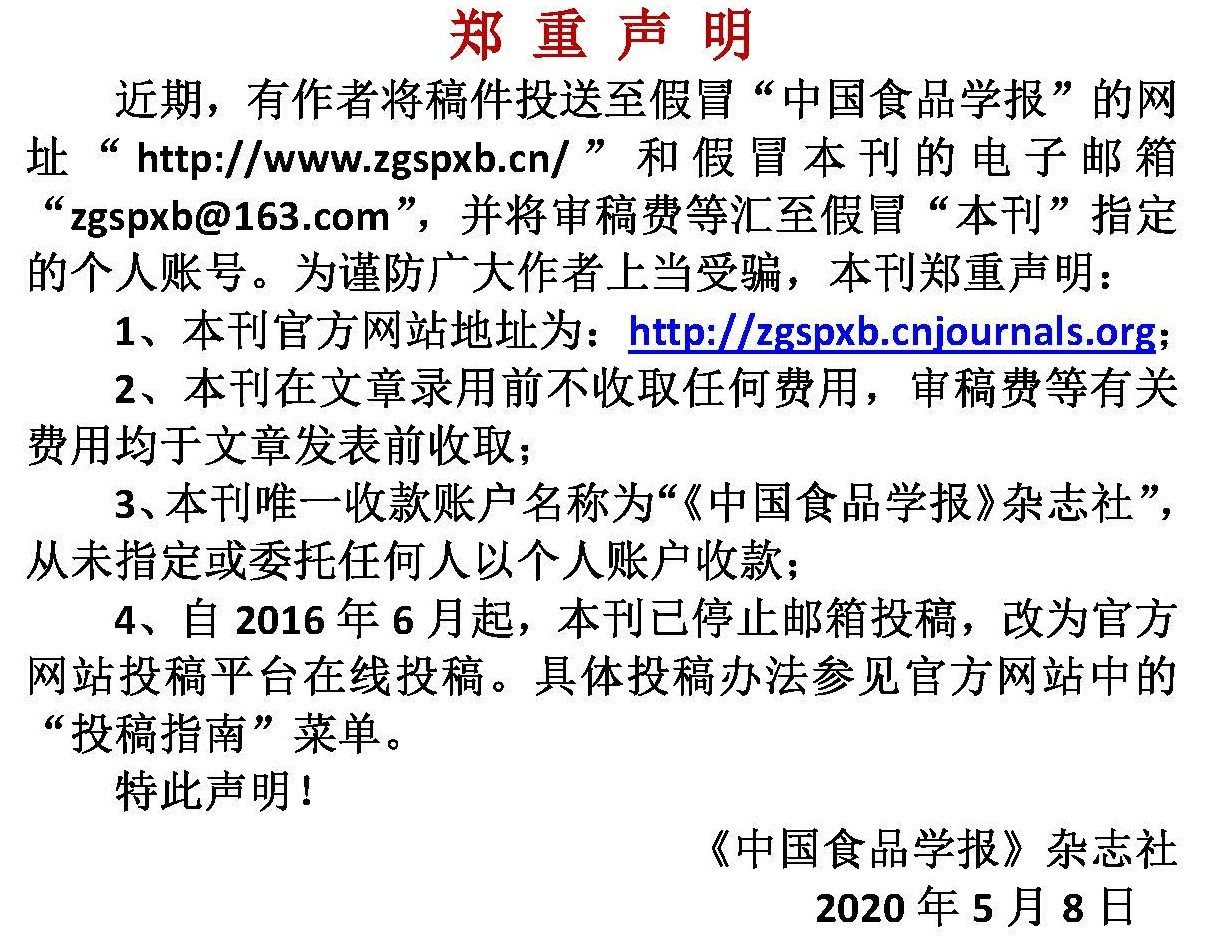臭豆腐发酵过程中丙酸形成的机制
作者:
作者单位:
(1.浙江大学生物系统工程与食品科学学院 杭州 310012;2.祖名豆制品股份有限公司 杭州 310051)
作者简介:
通讯作者:
中图分类号:
基金项目:
The Mechanisms of Propionic Acid Formation in the Fermentation of Stinky Tofu
Author:
Affiliation:
(1.College of Biosystems Engineering and Food Science, Zhejiang University, Hangzhou 310012;2.Zu Ming Bean Products Co. Ltd., Hangzhou 310051)
Fund Project:
引用本文
嵇晨,周溯,韩晓华,屠鹏程,叶翔,阎芙洁.臭豆腐发酵过程中丙酸形成的机制[J].中国食品学报,2023,23(5):352-361
复制分享
文章指标
- 点击次数:
- 下载次数:
- HTML阅读次数:
历史
- 收稿日期:2022-05-15
- 最后修改日期:
- 录用日期:
- 在线发布日期: 2023-06-25
- 出版日期:
文章二维码

版权所有 :《中国食品学报》杂志社 京ICP备09084417号-4
地址 :北京市海淀区阜成路北三街8号9层 邮政编码 :100048
电话 :010-65223596 65265375 电子邮箱 :chinaspxb@vip.163.com
技术支持:北京勤云科技发展有限公司
地址 :北京市海淀区阜成路北三街8号9层 邮政编码 :100048
电话 :010-65223596 65265375 电子邮箱 :chinaspxb@vip.163.com
技术支持:北京勤云科技发展有限公司
